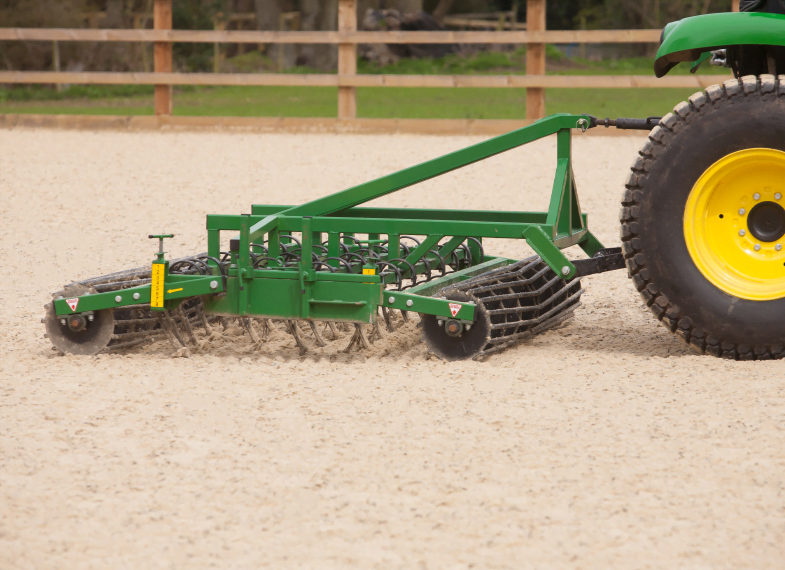Riding Arena Maintenance
Taking good care of your arena surface with a thorough and regular maintenance regime is essential to keeping your equestrian surface riding at its optimum performance level. The frequency and type of maintenance you should undertake will depend on the climate, surface type, level of use and style of riding, e.g. predominantly showjumping or dressage.
Once your arena build or refurbishment is complete, it’s essential to introduce a daily programme for maintaining your surface. This programme allows you to study what effects horses’ hooves and the weather have on the footing before settling on an appropriate schedule. When maintaining your surface, you should always pay particular attention to high-traffic areas such as the entrance, outside track, and centre line.
Surface graders come in various types and sizes, with multiple functions usually designed around a specific surface, such as sand and fibre or sand and rubber. It’s essential to use the correct maintenance equipment for your chosen footing, as using the wrong type of grader can be detrimental to the surface and cause unnecessary problems.
When grading your arena surface, it’s essential to set the tines at the correct level. They can cut into the underlying membrane and stone if set too deeply, which can be costly to repair. On the other hand, tines set too high won’t re-distribute or level the surface. Graders can either be ‘towable’ or ‘tractor mounted’ and are best used in conjunction with a quad bike or small tractor. It is also recommended that you use a depth probe at least four times a year to check for inconsistencies in the surface depth – recording any anomalies on a chart for easy reference. This process allows you to spot any irregularities and indicate if the surface requires re-levelling or topping up.
Maintaining Waxed & Non-waxed Surfaces
Waxed equestrian surfaces are durable and require minimal maintenance to keep them at peak performance. Additionally, their wax element, which has binding and adhesive properties, ensure these footings are dust-free, provide minimal kick-back, adapt well to most changes in climate and require no additional irrigation.
In comparison, non-coated surfaces require significantly more maintenance and are susceptible to drying out, which can cause the silica sand to ‘ride deep’. Therefore, most non-waxed equestrian surfaces require regular irrigation to help keep the footing secure and compact.


Tips for Improving the Longevity of Your Surface
- Always remove any droppings and any other organic matter, such as leaves, as quickly as possible from the arena surface. Droppings and organic matter can quickly degrade into your footing, affecting its stability and causing the surface to dry out prematurely.
- Pick out your horse’s hooves and make sure their legs are as clean as possible before entering the arena.
- Whether you use a quad bike or tractor to maintain the surface, ensure that the tyres are clean to avoid contaminating the footing.
- Never neglect your surface. Keep in mind that a regular and thorough maintenance programme significantly prolongs the life span of your arena and avoids expensive repairs.
